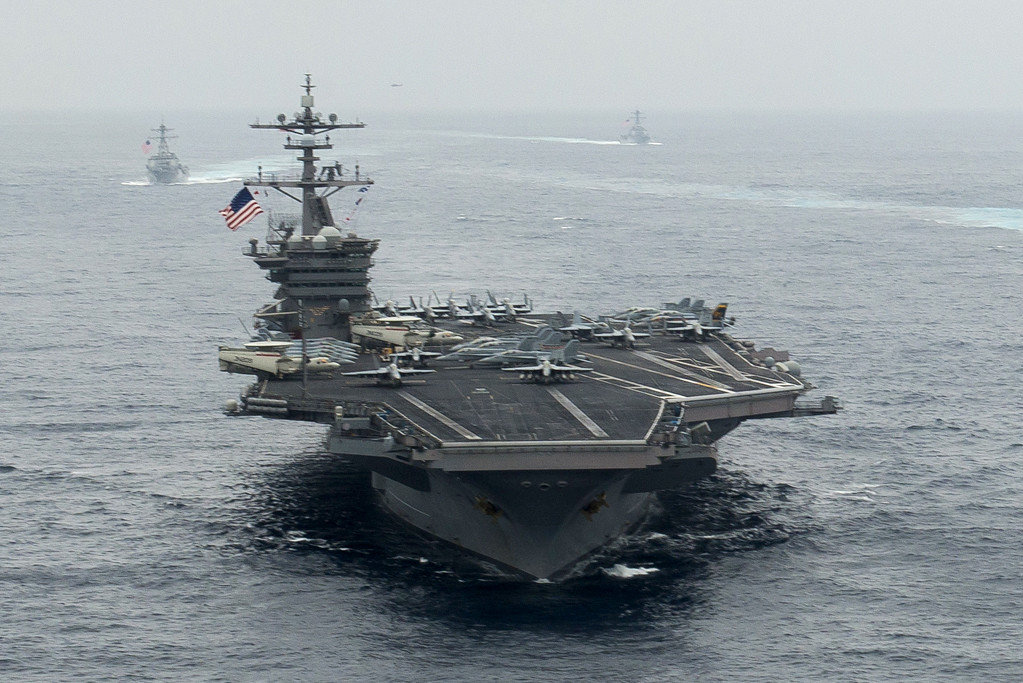From U.S. 3rd Fleet Public Affairs
In this file photo ships of the Carl Vinson Strike Group steam in formation during pre-deployment training in August. (U.S. Navy/MCSN Daniel P. Jackson Norgart) >>
SAN DIEGO - Ships and units from the Carl Vinson Strike Group (CVNSG) will depart San Diego for a regularly-scheduled deployment to the Western Pacific, Jan. 5 and Jan. 6.
The Nimitz-class aircraft carrier USS Carl Vinson (CVN 70), Carrier Air Wing (CVW) 2, and embarked Destroyer Squadron (CDS) 1 will deploy with Ticonderoga class guided-missile cruiser USS Lake Champlain (CG 57) and Arleigh Burke-class guided-missile destroyers USS Michael Murphy (DDG 112) and USS Wayne E. Meyer (DDG 108).
Homeported in Pearl Harbor, Hawaii, Michael Murphy will join CVNSG later this month as the strike group makes its way to the Western Pacific.
CVNSG will deploy with approximately 7,500 Sailors and will focus on maritime security operations and theater security cooperation efforts. The strike group assets will conduct bilateral exercises in the Indo-Asia-Pacific region to include anti-submarine warfare, maneuvering drills, gunnery exercises and visit, board, search and seizure subject matter expert exchanges.
Carl Vinson will also embark the aviation squadrons of CVW-2 which include the “Black Knights” of Helicopter Sea Combat Squadron (HSC) 4, the “Blue Hawks” of Helicopter Maritime Strike Squadron (HSM 78), the “Bounty Hunters” of Strike Fighter Squadrons (VFA) 2, the “Blue Blasters” of VFA-34, the “Krestrels” of VFA-137, the “Golden Dragons” of VFA-192, the “Black Eagles” of Carrier Airborne Early Warning Squadron (VAW) 113, the “Gauntlets” of Electronic Attack Squadron (VAQ) 136 and the “Providers” of Fleet Logistic Support Squadron (VRC) 30.
U.S. 3rd Fleet leads naval forces in the Pacific and provides the realistic, relevant training necessary for an effective global Navy. Third Fleet constantly coordinates with U.S. 7th Fleet to plan and execute missions based on their complementary strengths to promote ongoing peace, security, and stability throughout the entire Pacific theater of operations.

